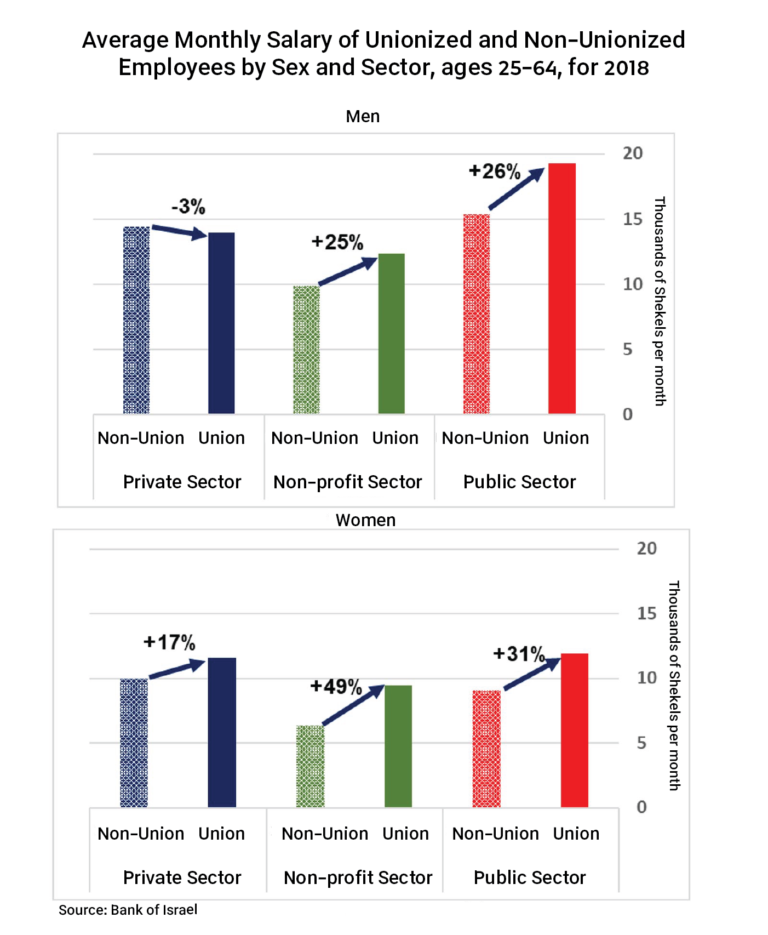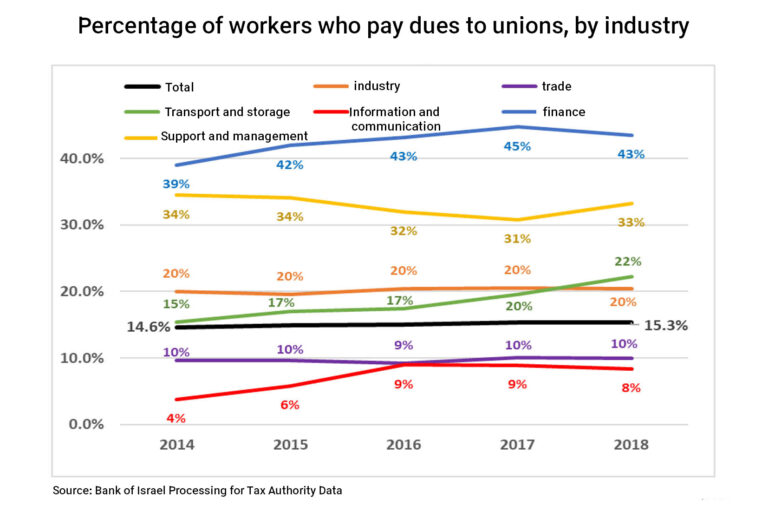
About a quarter of employees in the Israeli economy are members of labor unions or benefit from collective bargaining agreements, according to a study published last week by the Bank of Israel in their annual report.
In a statement commenting on the insights of the study, Histadrut Chairman Arnon Bar-David emphasized the Histadrut’s commitment to continue unionizing new groups of workers.
“As the momentum from unionizing in Israel continues to strengthen, the Histadrut is becoming one of the most prominent workers’ organizations in the OECD countries,” Bar-David wrote.
“In recent years, we have proven, time and time again, the important role that the Histadrut plays as a balancing factor in the economy and as an essential safety net for the working public. We will continue to open our doors to new audiences and professional sectors that were not part of the world of organized work in the past, and we will harness our power to reduce socioeconomic disparities, encourage growth, and strengthen Israeli society.”

Women benefit the most from unionization
According to the study, the proportion of unionized workers is 65% in the public sector, 15% in the business sector, and 11% among non-profit organizations that provide public services. The Bank of Israel noted that the government’s choice to provide public services through nonprofit organizations, rather than through government bodies themselves, in effect reduces the proportion of public services provided by unionized workers.
The study shows that the wage gap between unionized and non-unionized workers is particularly pronounced among women. In the public sector, the wage gap between unionized and non-unionized workers is 26% higher wages for unionized men and 31% higher for unionized women. In non-profit organizations that provide public services, it is 25% higher wages for unionized men and 49% higher for unionized women.
In the business sector, the wages of non-unionized men are on average 3% higher than the wages of unionized men, but the wages of unionized women are on average 17% higher than their non-unionized counterparts. The Bank of Israel emphasized that some of the wage gaps between unionized and non-unionized workers may be due to other differences between their workplaces, and not only due to unionization itself.

Unionized older workers enjoy a stable salary
The Bank noted that despite relatively small wage gaps between unionized and non-unionized workers in the business sector, the wages of unionized workers aged 50-60 in these industries are high and stable, while the wages of non-unionized workers decrease with age. According to the researchers, it is possible that the unions’ maintenance of seniority at a high wage level is related to wage agreements, which make it difficult to lay off veteran workers or reduce their wages.
Another major difference between unionized and non-unionized workers in the business sector is found in the employer’s pension provisions, which are higher for unionized employees by about 2,300 shekels ($740) per year.
2012 as a turning point: a decade of rising union rates
The proportion of unionized workers in Israel has dropped significantly since the 1980s, especially after the enactment of the State Health Insurance Law in 1995, which ended the automatic enrollment of members of Israel’s national health insurance funds in the Histadrut.
The rate of membership in workers’ organizations fell from 45% in 2000 to about 34% in 2006, and to 23% in 2012. After 2012, the decline was halted, and the rate of employees in trade unions rose slightly to about 25% in 2016. It has continued to rise moderately. Israel’s upward trend stands in contrast to the global trend of declining membership in workers’ unions.
The Bank of Israel saw several reasons for the increase. One is unions’ push to recruit new members from previously unincorporated industries. In 2009, the Histadrut established the Trade Union Division, which led to the unionization of workers in the cellular, finance, and high-tech, and public transportation industries for the first time. Another reason is the establishment of additional workers’ organizations.
The report notes that the momentum of the union also relied on changes in legislation. A 2012 ruling on Pelephone workers’ unionization attempts also helped, as it prohibited employers from expressing a position regarding their workers’ attempts to unionize.
In the business sector, there was an increase of 0.8% in the rate of organized workers between 2014 and 2018. This increase is largely due to an increase of 5% in the rate of employees unionized in the telecommunication, transportation, and finance industries. In the finance industry, 43% of employees are unionized. In the support and management industry that figure is 33%, in the transportation and storage industry 22%, in manufacturing 20%, in trade 10%, and, in the information and communications industry, 8%.

For example, the Social Survey of the Central Bureau of Statistics (CBS) was based on employees self-reporting whether or not they belong to unions. In the CBS survey, the percentage of employees who reported being members of a union in 2016 was 27%.






